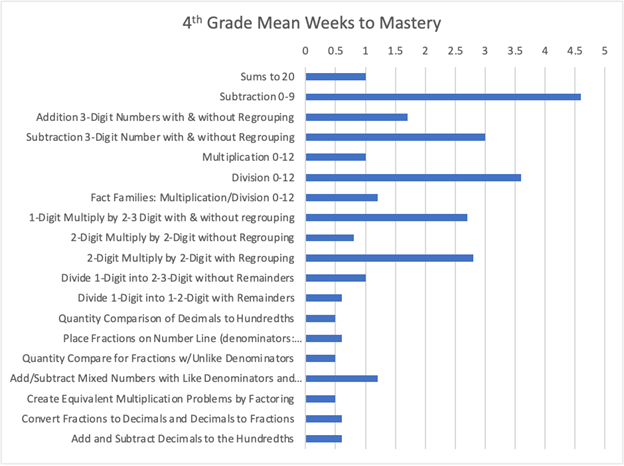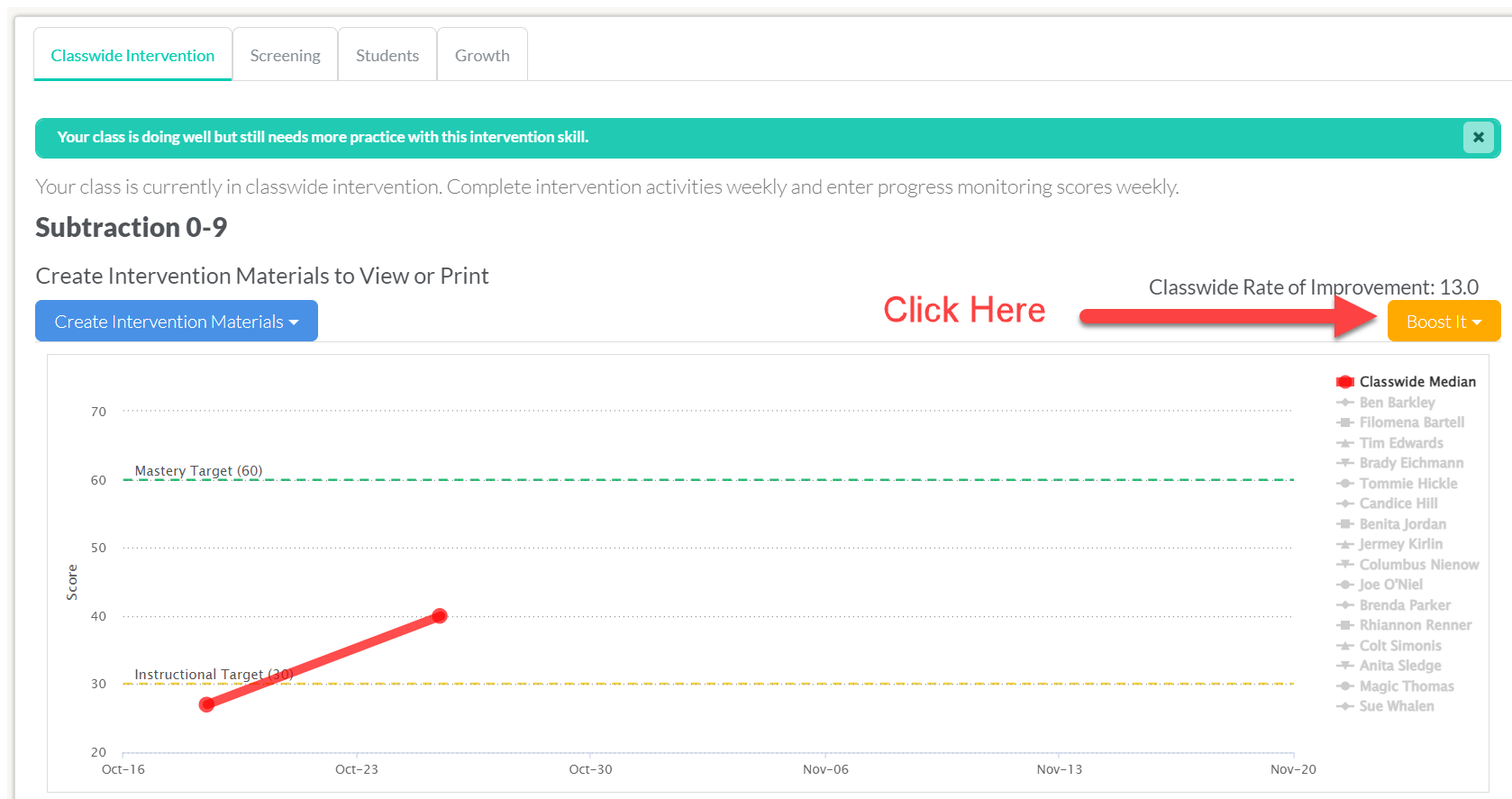Incremental rehearsal, including why it starts on prior skill
By SpringMath author, Dr. Amanda VanDerHeyden
We know that moving children forward without getting them to mastery is very short-sighted and results in both less content coverage and a lower probability of mastering future content. Getting students to mastery brings enormous, long-term, cumulative benefit to students. We also know that getting children to mastery more quickly gives time for students to master additional skills. Reducing the average time to mastery preserves instructional time and allows students to work with more challenging, grade-level content successfully.
In the graph above, it is evident that subtraction and division are the most challenging skills to master in fourth grade, and the same pattern holds true for grades three through six. We cannot reach conclusions about why this might be the case, but we might speculate that students are not initially taught these skills as the inverse operations of operations they already know how to do (subtraction is inverse of addition, and division is inverse of multiplication).
We hope that our brief instructional videos, which can be found in the SpringMath application, will make these understandings more explicit for students when subtraction and division are introduced or reintroduced during classwide intervention. It is also possible that the skills/concepts were introduced but students were not given adequate time to actually reach mastery when they were first taught and now they have forgotten how to do them.
Incremental rehearsal uses a specific order of presentation of a targeted unknown item and known items, gradually increasing the number of known items interspersed between the presentations of the unknown item. Usually by the end of a given session for most students, the unknown target is answered correctly and then becomes the first “known” in the next session’s set of items, thus creating a very systematic repetition within and across sessions to build fluency. Research studies have found incremental rehearsal to outperform standard flashcard drills in building student skill that sustains over time with large effect sizes on aligned measures in experimental studies.
The difficult part of using incremental rehearsal is protecting its active mechanism – the order of delivery of the items within and across sessions. Its effect size, efficiency, and amenability to digital delivery made it the perfect fit for our purpose, which is to boost performance on subtraction and division fact mastery during classwide math intervention. You will see an orange "Boost It" button appear in your Classwide Intervention dash. This button will appear before you begin working on subtraction in classwide intervention. The purpose of this is to provide more sessions of incremental rehearsal and to pre-teach at least some of the subtraction before students begin daily practice.
When you click on the "Boost It" button, shown above, you will see a brief explanation of how it works, a short video, and then you can preview the day's session if you'd like. Once you click "Use," the first session will be considered conducted and you cannot return to it. Each day that you use the Incremental Rehearsal "Boost It," SpringMath will track this use and advance you to new materials the next session.
What is the day's Boost It session? You will get a very short video teaching one "unknown" item to show your class. that is the unknown for the day. Then you simply show the slide deck and have children chorally respond to each item. That's it. The entire add-on session should take approximately three to five minutes and can be conducted any time of day (doesn't have to occur adjacent to the classwide intervention if that is not convenient in terms of your schedule).
It's important to continue classwide intervention daily, and if you use the Boost It, do so as an add-on to classwide intervention (not a substitute). You will see faster progress on both subtraction and division if you can add the Boost It sessions we recommend. When you students reach mastery on the target skill (subtraction or division), the Boost It button will disappear.



